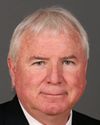Thank you very much, Chair. I'd like to thank the committee for this opportunity to share my experience and perspective on the Afghanistan mission and the important issue of Canadian-transferred detainees.
Recent testimony and media coverage have left the impression that I discouraged honest reporting about the situation in Afghanistan, and that I contributed to a situation in which detainees captured by the Canadian Forces were transferred to Afghan authorities without due regard to the risk of torture. This is simply not true.
Like so many others, I am proud of my work on Afghanistan and feel confident that I did my best to ensure that in everything we did we acted to conduct our operations effectively, save Afghan and Canadian lives, build stronger Afghan institutions, and meet our legal obligations as well as the high expectations of Canadians.
Let me start by explaining my own involvement in the evolution of the Afghan mission.
I had visited Afghanistan twice in my student days in the 1970s, and returned again much later in my capacity as assistant deputy minister, Asia Pacific, first with then Deputy Prime Minister John Manley in January of 2002 just after the fall of the Taliban, and in September 2003 with then Foreign Minister Bill Graham for the opening of our then new embassy in Kabul.
Later, as foreign and defence policy advisor to the Prime Minister from April 2006 to February 2007, I participated, when my presence in Ottawa would allow it, as an observer in the committee of deputy ministers that then oversaw the mission. Among the issues I followed closely at that time were efforts to have our civilian officials re-engage in Kandahar following the death of our colleague Glyn Berry on January 15, 2006.
In the aftermath of Operation Medusa that summer, which, as General Hillier described yesterday, was Canada's largest military engagement since Korea, I helped to secure the additional equipment that was needed to support our people in the field. I also worked on preparations for the NATO summit in Riga, in which the Prime Minister launched the diplomatic engagement that over time brought thousands of additional troops to southern Afghanistan. I also helped to plan a visit to Afghanistan by the previous Clerk of the Privy Council--a visit that would make recommendations about how we managed Afghanistan, including having me return to the Department of Foreign Affairs to take up that challenge.
In February 2007 I was named Associate Deputy Minister of Foreign Affairs and was given lead responsibility to coordinate intergovernmental efforts on Afghanistan. With the exception of also being lead official for the G-8 in 2007, I would work almost exclusively on Afghanistan at the Department of Foreign Affairs and later at PCO until May 2009. I visited Afghanistan eleven more times in that period.
The mission I joined in February 2007 was characterized as 3-D, referring to the pillars of defence, diplomacy, and development all working together. But the effort was not as coordinated and coherent as it should have been and needed to be. The number of civilians deployed to the field was too few and they were too junior. Management structures defining who was accountable and responsible for what were too diffuse.
Most serious, in my view, was the lack of true coordination between headquarters and the field, between Kabul and Kandahar, and between the military and the civilians, which prevented us from delivering a truly whole-of-government effort.
I worked to change that with a growing team of talented people. We created a new Afghanistan task force in the Department of Foreign Affairs that brought all resources under my responsibility. We set to work to build a single coordinated plan that would allow us to align people, programs, and resources in support of a clearly defined set of Canadian objectives. This was a process that would not be complete until, thanks to the Manley panel, we had established coherence around six priorities and three signature projects.
We also began to build up civilian resources and, importantly, to bring more senior civilian resources into Afghanistan. This too took time. We needed to completely revamp how we identified, recruited, trained, deployed, and supported our people.
We grew our civilian presence from a handful in Kandahar in early 2006 to more than 120 civilians in Afghanistan today, including more than 80 in Kandahar. No other country has as many civilians in as difficult and dangerous a place as Canada does.
So my early focus, after making a quick initial visit to Afghanistan, was to bring greater coherence to our work, to create a more truly collaborative approach between headquarters and the field, and to begin assigning more civilians and more senior civilians to the field.
With regard to the specific issue of detainees, it was clear that here, too, greater coordination between government departments was required. As General Hillier indicated in his opening statement yesterday, reporting from respected international sources confirmed that the challenges faced by Afghanistan were enormous and that Canada's detainee policy had to be situated within that context.
It was precisely because of those challenges that the government had concluded the transfer arrangement in December 2005, which provided assurances from the Government of Afghanistan that detainees transferred by the Canadian Forces would be treated humanely and in accordance with Afghanistan's international legal obligations.
But as General Hillier also testified yesterday, we learned that in the face of an evolving insurgency and many other challenges, we needed to reinforce our work here as elsewhere, consistent with our objective to build Afghanistan's capacity to implement those obligations.
When I took up my responsibilities at DFAIT in February 2007, the department was already exploring ways to engage in monitoring and tracking detainees. At the same time, we had an exchange of letters with the Afghanistan Independent Human Rights Commission, an organization for which we are a major funder, in which the AIHRC agreed to notify Canada should it learn of any mistreatment of Canadian-transferred detainees.
In mid-March we began detailed work to create a contingency plan—a standard operating procedure—in the event of well-founded allegations of mistreatment. We did this not because of confirmed instances of real and substantial risk of torture or mistreatment of Canadian-transferred detainees but because it was clear that what we had in place at the time could and should be further reinforced. We needed to be far more engaged in terms of monitoring, training, and providing infrastructure and equipment.
We worked quickly and collaboratively to design a system that would require contributions from the Canadian Forces, the Department of National Defence, the Department of Foreign Affairs, Correctional Service of Canada, the RCMP, the Department of Justice, and several of our diplomatic posts. I spent hours talking with, and in many cases visiting, people involved in the intelligence work and the actual operations in the field. I walked through every step of the incarceration process at Kandahar airfield. I would later visit the NDS detention facility in Kandahar and sit in on an interview with a Canadian-transferred detainee.
We were very attuned to the many problems in the Afghan justice system. In a country so beset by poverty, illiteracy, insurgency, with a lack of public institutions, and suffering from decades of civil strife, the possibility of mistreatment could not be ignored. We did not ignore it.
A dedicated and experienced interdepartmental team talked with Afghan officials in Kabul and Kandahar, with allies and with informed people in the relevant international organizations—in short, everyone who had a stake in the issue—so that we could find out what they knew.
We reviewed all relevant reports and documents, took the time to consult, built a common sense of objectives and purpose and a clear understanding of roles and responsibilities, and marshalled the resources to ensure effective implementation. And we negotiated a new and better arrangement with the Afghans.
Throughout, we were clearly aware of our responsibilities under international law and were informed by a need to build capacity in Afghan institutions.
We in no way underestimated the challenges, but we had confidence in our people and in the array of tools that we could bring to the effort—training, monitoring, providing new infrastructure and equipment, engaging the Afghans at all levels to remind them of their obligations and commitments.
The issue was not theoretical. First, we had no doubt that the detainees captured by the Canadian Forces posed a real threat to Afghans, and more than that, in some cases had Canadian blood on their hands. Our inability to put into the Afghan justice system those who were captured on the battlefield or in operations against IED makers would have put Afghans and Canadians at more risk.
Second, a working correctional system and a working justice system are critical to governance, nowhere more so than in Afghanistan. If we gave up on that, it would be a terrible setback for the Afghan people. We believed that we needed to effect change and that we had the ability—and the obligation—to do so.
On May 3, 2007, our government signed a supplementary arrangement that enhanced the December 2005 arrangement in a number of important respects to make explicit Canada's expectations and Afghanistan's responsibilities. The supplementary arrangement provided us with unrestricted and private access to any person transferred by the Canadian Forces to Afghan authorities; acknowledged that the Afghanistan Independent Human Rights Commission and the International Committee of the Red Cross have the same unrestricted access; made clear that the Afghan government would investigate all allegations of abuse and mistreatment and prosecute offenders in accordance with national law and internationally applicable legal standards; and provided that Canadian-transferred detainees would only be held in a limited number of facilities, thereby facilitating access and monitoring. This was a major interdepartmental achievement, and remains, arguably, the strongest model for any NATO nation operating in Afghanistan.
Now let me say a few words about my management, not just at DFAIT or PCO, but of the broader interdepartmental team that I was asked to coordinate. The Afghanistan mission presented us with a number of challenges that none of us had ever faced before. We learned every single day, talked about how we could do better, integrated best practices into our work, and refined our policies and processes in the face of an evolving series of challenges. One of those challenges was how to move from policy discussion to policy formulation to implementation.
On detainees, as on all the files we were coming to terms with, I encouraged an open airing of views, opinions, and suggestions. But once the policy was decided, I made it clear that it was up to all officials to implement it with rigour, commitment, and discipline.
I have already observed that I felt we needed far more consultation and teamwork. I noticed that departments tended to report separately, in some cases only to their own people. And although I would certainly be considered an insider, when reading some of the field reporting it was not always clear whether what we were reading was based on first-hand experience or opinion; whether an author was speaking with the authority of his home department, the embassy, or even the Government of Canada, or offering an individual view.
Though there was a high volume of reporting, there was a lower volume of hard facts. I felt that it was my job to ensure that we were providing the best possible fact-based advice.
Allow me to say a few words about one member of our team. Richard Colvin willingly volunteered to go into a dangerous theatre of operations and undertook very challenging work at a time when there was not a long lineup of people willing to do so. He demonstrated bravery and dedication, and for that I am very grateful.
Richard was one of a very large number of people who brought ideas, suggestions, and recommendations to bear for consideration. I didn't always agree with him, but I always listened. The volume of reporting he did would alone suggest that he always had ample opportunity to express himself and have his views considered. In fact, the revised transfer arrangement addresses each of the shortcomings he spoke to in his testimony before this committee because of the collaborative interdepartmental work we did to get to that point. He acknowledged this.
The view that I muzzled him or any other official is wrong. The correspondence to which he has referred I believe is from April 24, 2007. We had written to provide our embassy in Kabul with our diplomatic contingency plan, the product of extensive interdepartmental consultation that had included the embassy. He wrote back with a message that appeared to reopen the debate based on no new information; to request that we take up a course of action that we were already taking; and to offer views about how the military should conduct its operations. This caused considerable confusion in Ottawa.
I made three points to him. First, I made it clear that the approach we had underlined represented interdepartmental consensus. Second, I made it clear that more detailed and specific tasking vis-à-vis the Government of Afghanistan and the AIHRC would follow. And third, I said that ideas, opinions, and strongly held views are often best first expressed by phone—first expressed.
Getting very different departments, agencies, and the Canadian Forces to agree, and much less do the same thing, was not easy. I insisted that we take the time to consult widely on all major issues. I asked people to talk through things, confer with colleagues, and to use the phone more.
You can't do work of this nature with officials in three continents and divided by several time zones exclusively through e-mail exchanges. We would bring all Ottawa players together into a single room, and connect them with key contacts in Kabul, Kandahar, and, where warranted, Brussels or New York. I made it clear that any and all views were welcome and that we were interested in seeing any new, relevant information.
I also said that I expected people to be clear about whether they were reporting based on direct experience and whether they were adding new information. Our ability to add facts and understanding grew with our deployment of civilian experts.
I asked that the ambassador be consulted on all important policy messages, a necessary fact of life in every mission and something that senior people in Canada assumed was happening. I asked for reporting from the field that was factual, objective, collaborative, and subject to rigorous assessment.
Finally, I made it clear that after those extensive consultations, once a policy direction was set, I did not expect people, in the absence of any new or relevant information, to reopen the debate. To do so would be to sow confusion in the system, to undermine effective implementation, and to demoralize those who were risking their lives to visit the prisons and meet the commitments that all departments and agencies had agreed on.
I'm also very proud of the fact that far from stifling opinion or hiding the truth, we built up the resources to report fully, bluntly, and transparently on the mission. In this respect, I point to the Manley panel report and to the quarterly reports we have published since June 2008.
No other country offers this level of transparency, but our ability to do this was linked to getting civilian resources into the field and shifting from opinion, circumstantial evidence, and allegation to fact.
I helped forge a strong interdepartmental team that was vastly devoted to the mission, but also vastly devoted to Canadian values, starting with a respect for the law.
I spent more than two years on the Afghanistan file. I served in DFAIT. I served as secretary to the Manley panel, and I served in PCO, where I directed the work that saw all of the panel's recommendations implemented.
I helped to forge a strong interdepartmental team that was fiercely devoted to the mission but also fiercely devoted to Canadian values, starting with respect for the law. I left behind some colleagues who I know felt frustrated, because once our own airing of views and opinions had concluded and all relevant consultations were completed, we moved decisively from debate to implementation. I am confident, though, that we did this carefully, effectively, and with total fidelity to the standards expected of us by the Canadian government, the international community, and most importantly, Canadians.
Thank you very much.




